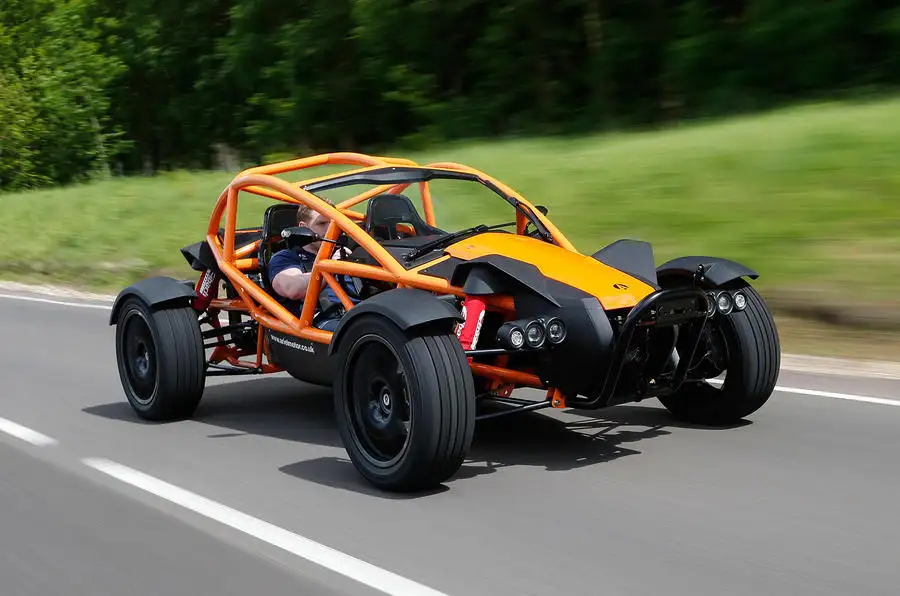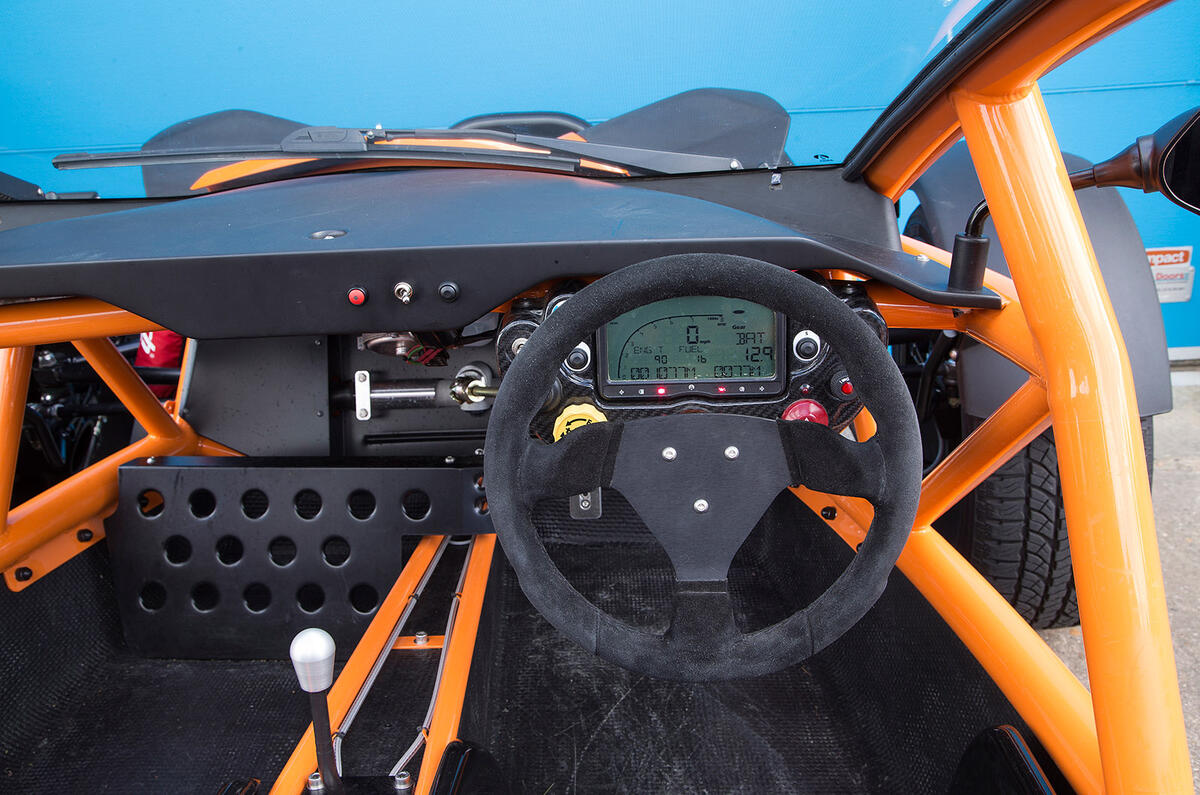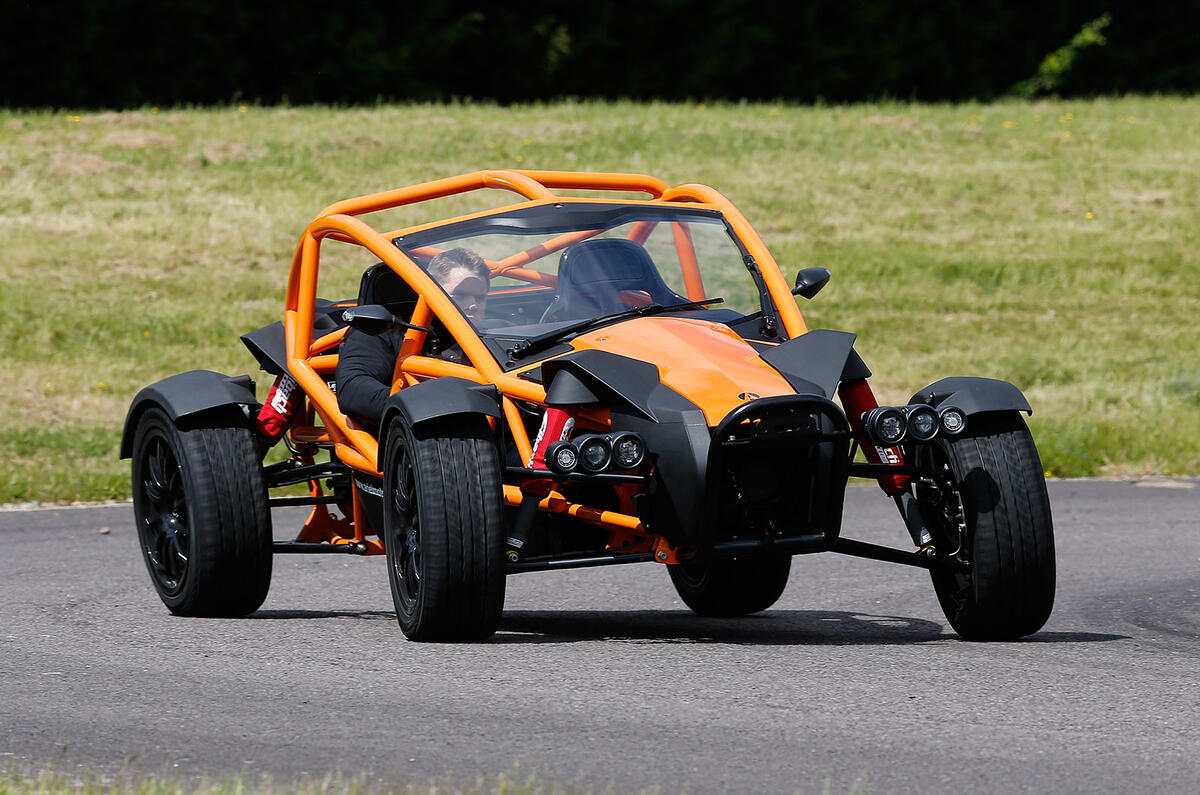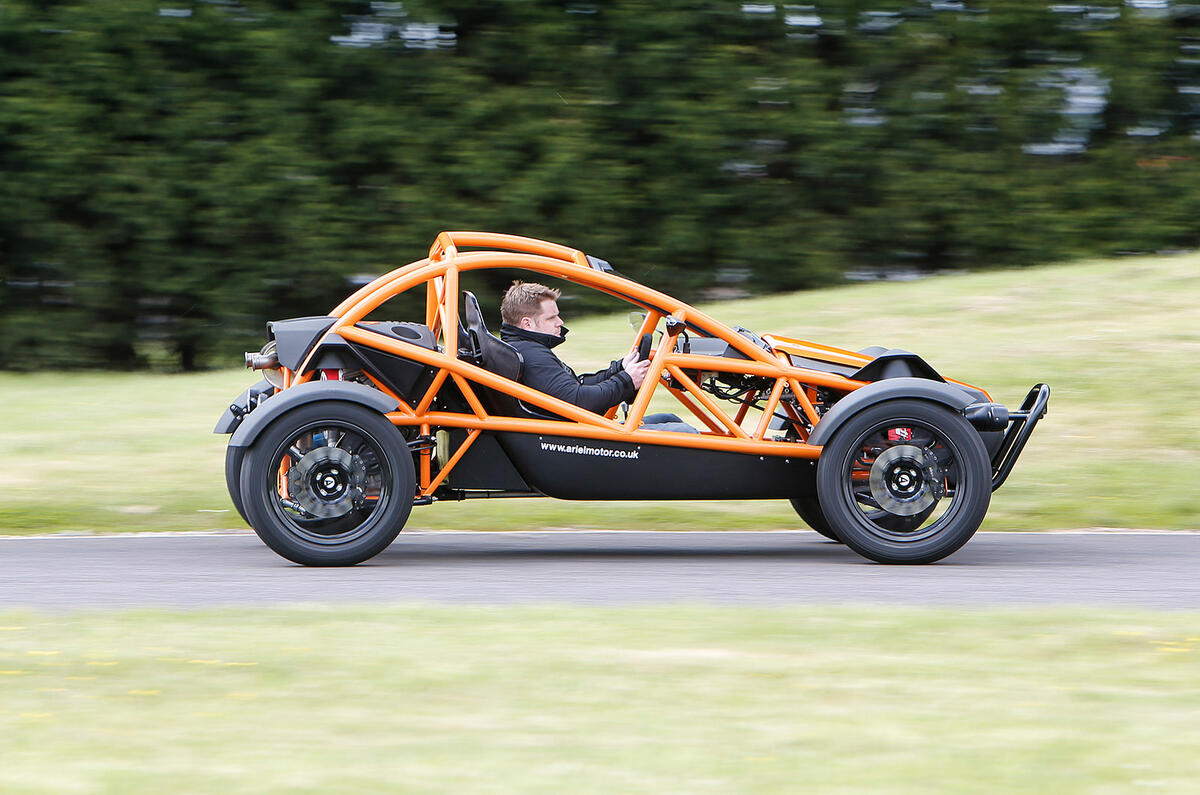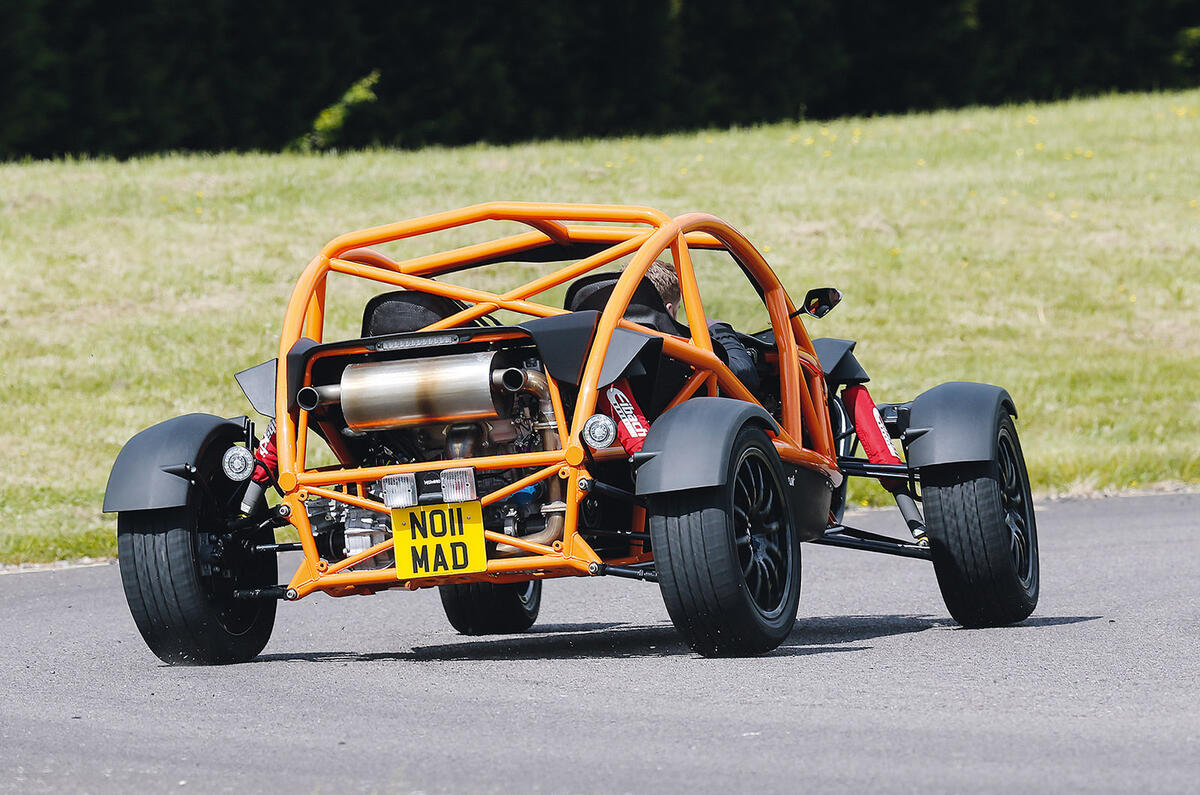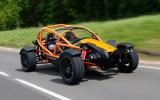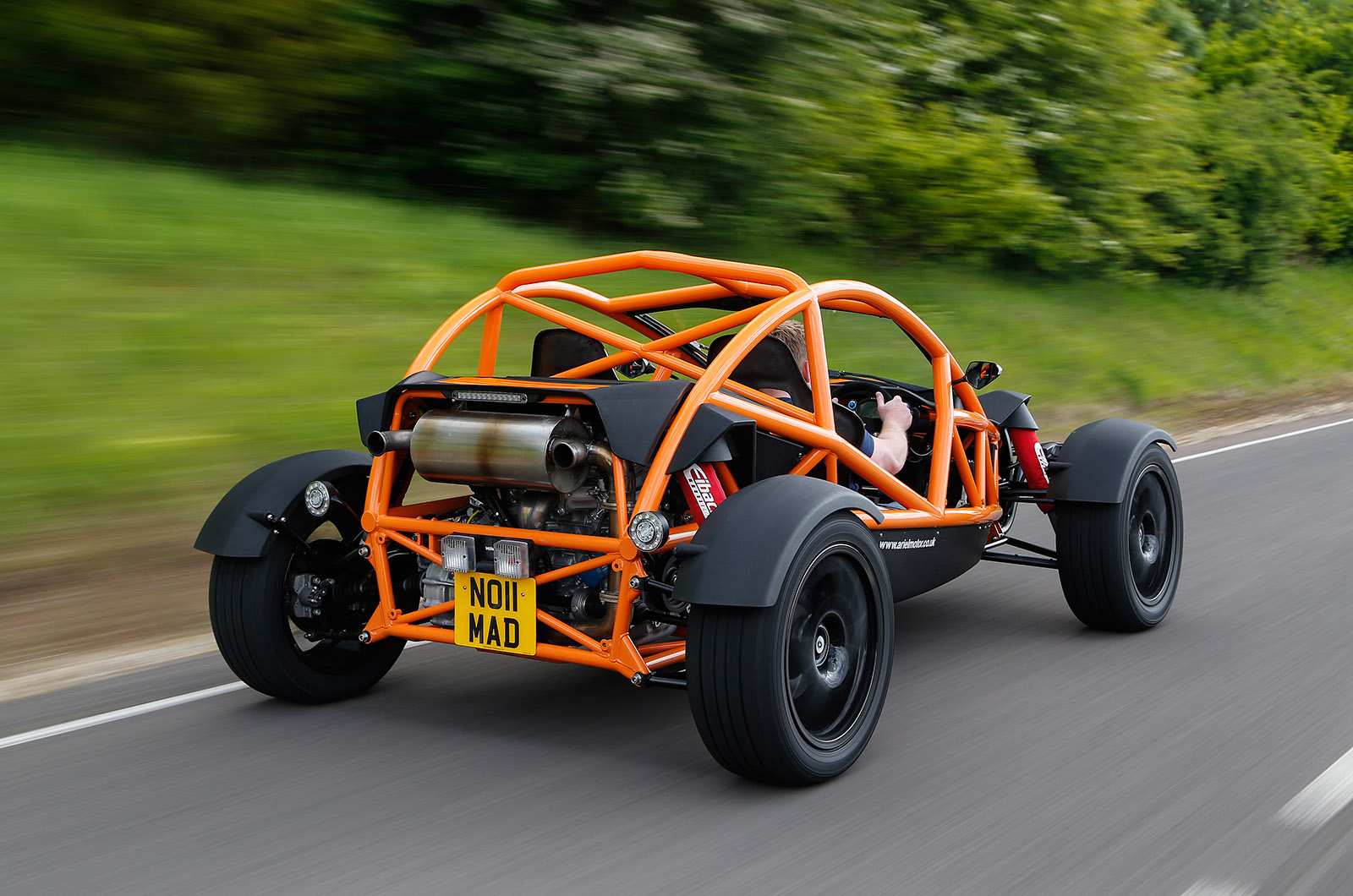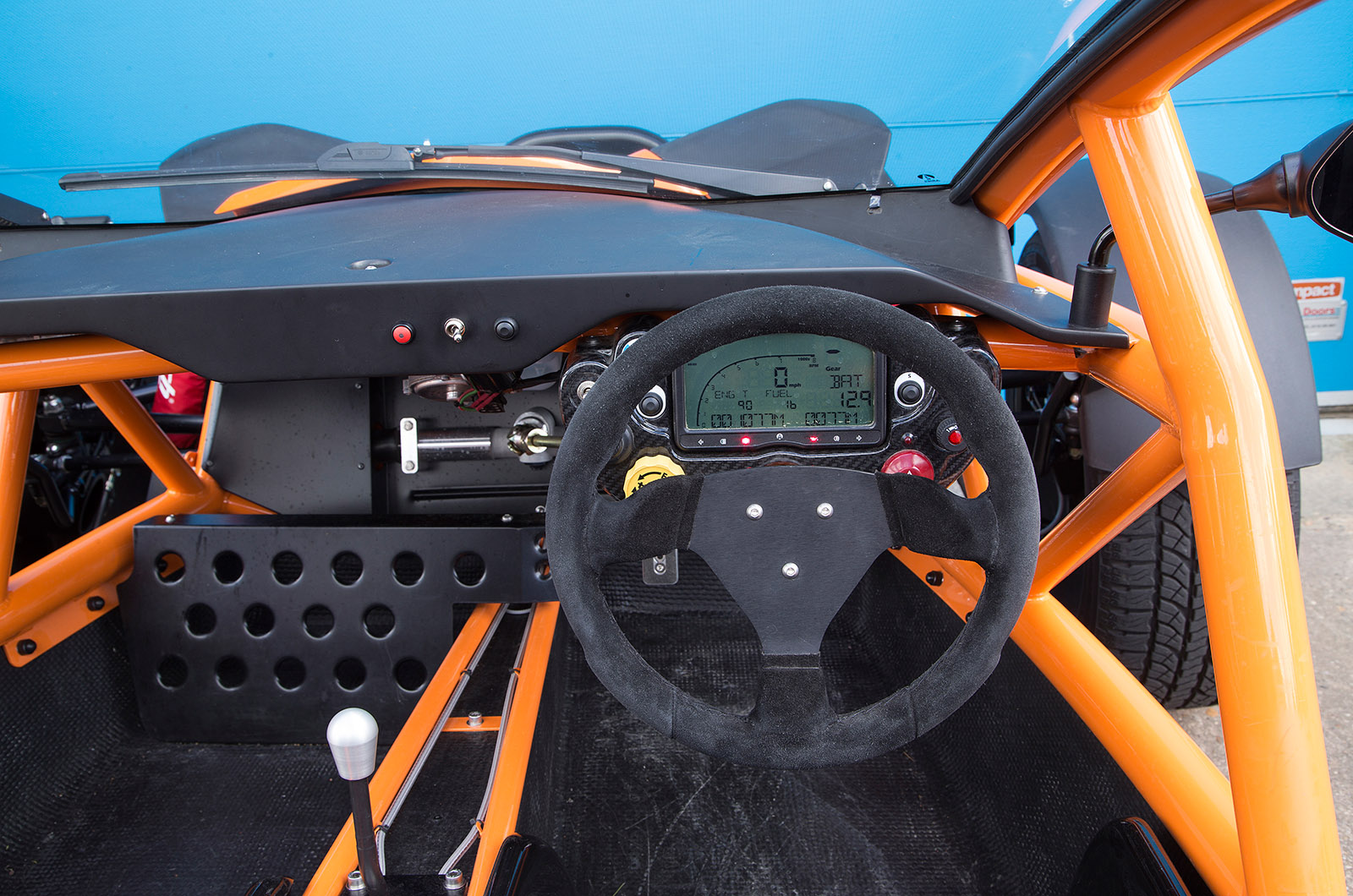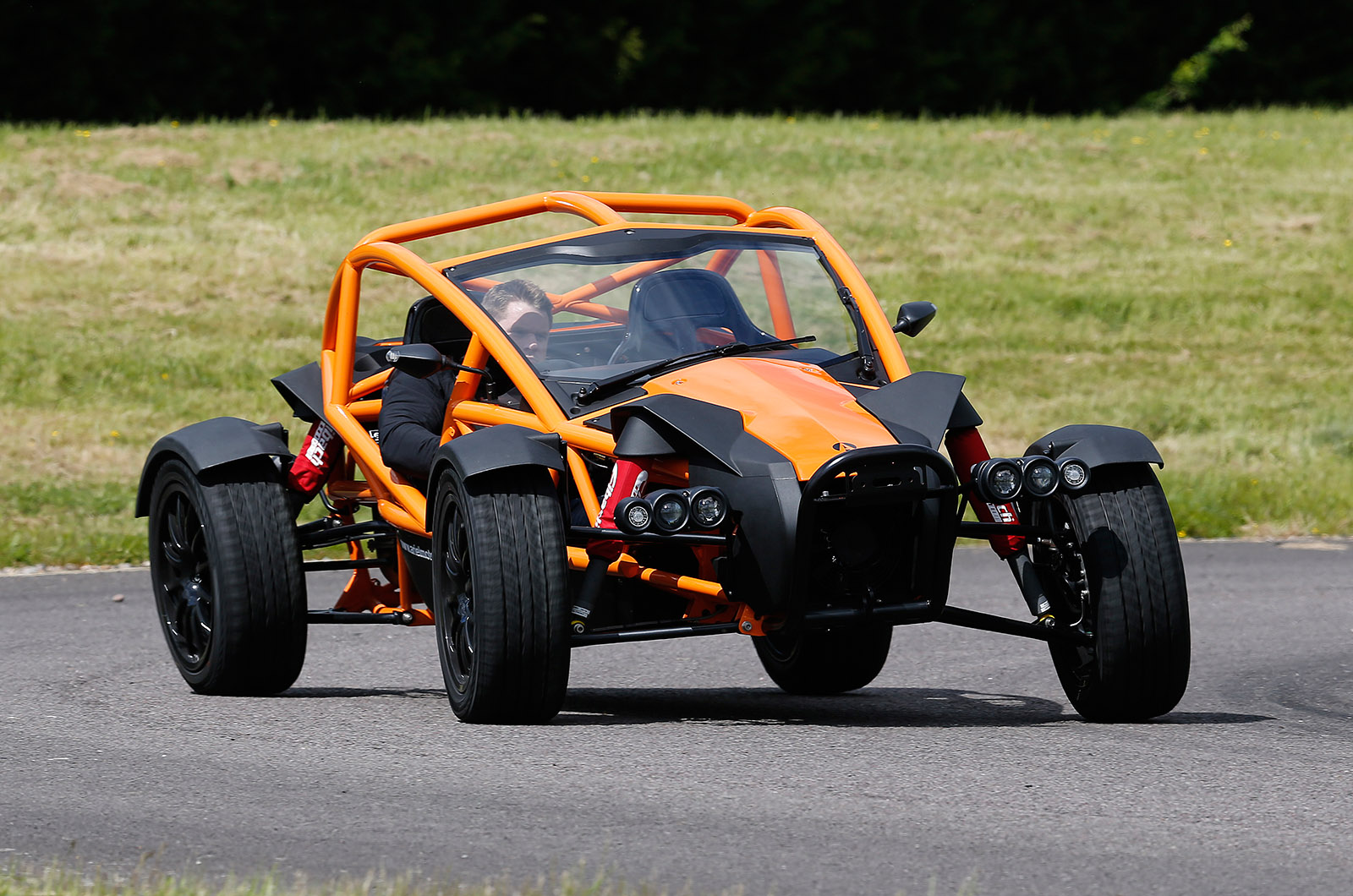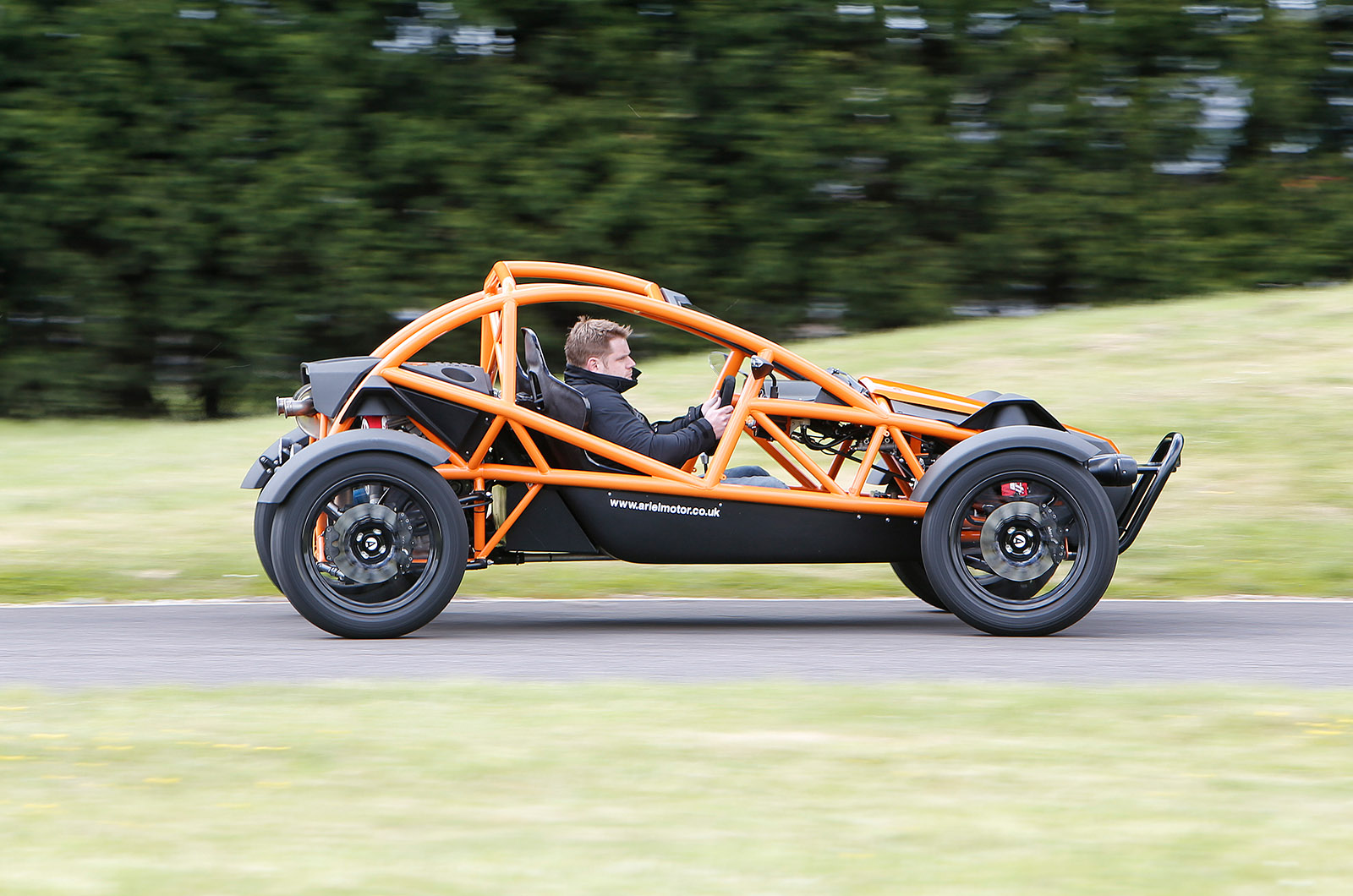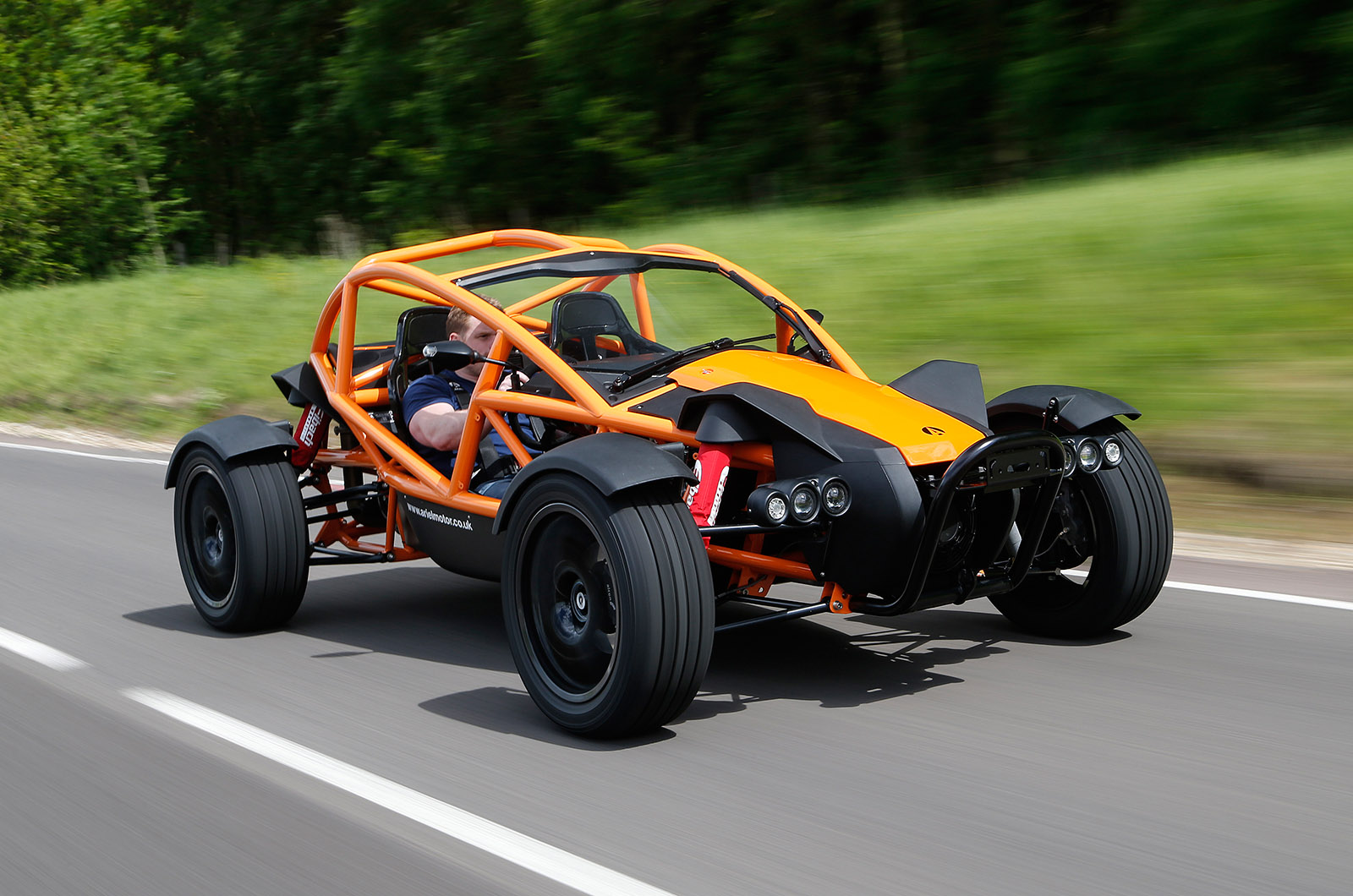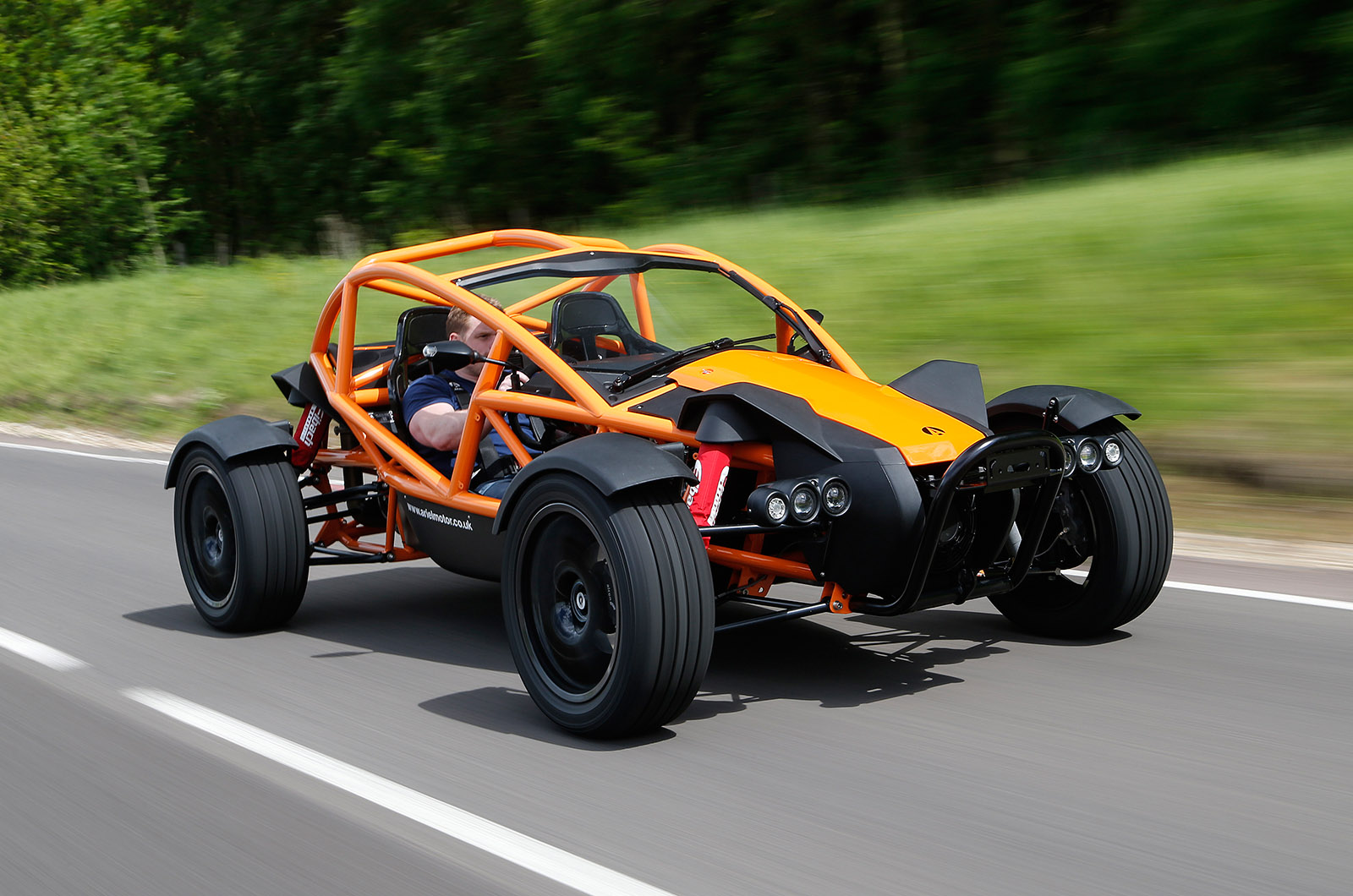The inspiration behind the Nomad is not hard to fathom. Every big-wheeled, lightweight off-roader that preceded it – an archive of misfits that includes everything from beach buggies to extreme sandrails – was about fulfilling that impulse to abandon the road’s well-trodden path and slither excitedly off into the dirt, dust and joy of the unknown.
Unsurprisingly, the idea of taking the Ariel Atom concept off-piste has been percolating in Somerset for quite some time. Ariel is not based in a town or city. Its factory is situated in countryside as verdant as a Thomas Hardy poem.
Outside of work, many of the firm’s staff can be found ploughing through it, aboard motor and mountain bikes or motley 4x4s. The leap, then, to remaking the Atom as a marauding byway muncher is not a monumental one.
But nor was it entirely simple or easy. Ariel began work on the Nomad at about the same time as it began to develop its motorbike and, for a small company, spreading its resources between the two must have been a stretch. It also found itself limited by its own perfectionism.
Rather than carry over as many Atom parts as possible and fit knobbly tyres for a bit of gravel road ability, Ariel incorporated a new Honda engine and experimented with hugely expensive (and brilliant) World Rally Championship-spec Ohlins dampers. As a result, the Nomad’s lineage is plainly recognisable, but this is a different machine from the one made famous by track days and TV shows.



